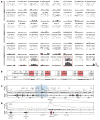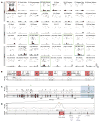Internally generated reactivation of single neurons in human hippocampus during free recall
- PMID: 18772395
- PMCID: PMC2650423
- DOI: 10.1126/science.1164685
Internally generated reactivation of single neurons in human hippocampus during free recall
Abstract
The emergence of memory, a trace of things past, into human consciousness is one of the greatest mysteries of the human mind. Whereas the neuronal basis of recognition memory can be probed experimentally in human and nonhuman primates, the study of free recall requires that the mind declare the occurrence of a recalled memory (an event intrinsic to the organism and invisible to an observer). Here, we report the activity of single neurons in the human hippocampus and surrounding areas when subjects first view cinematic episodes consisting of audiovisual sequences and again later when they freely recall these episodes. A subset of these neurons exhibited selective firing, which often persisted throughout and following specific episodes for as long as 12 seconds. Verbal reports of memories of these specific episodes at the time of free recall were preceded by selective reactivation of the same hippocampal and entorhinal cortex neurons. We suggest that this reactivation is an internally generated neuronal correlate for the subjective experience of spontaneous emergence of human recollection.
Figures



Comment in
-
Neuroscience. Hippocampal firing patterns linked to memory recall.Science. 2008 Sep 5;321(5894):1280-1. doi: 10.1126/science.321.5894.1280b. Science. 2008. PMID: 18772404 No abstract available.
-
Pioneering brain study reveals 'software' differences between humans and monkeys.Nature. 2019 Jan;565(7740):410-411. doi: 10.1038/d41586-019-00198-7. Nature. 2019. PMID: 30670859 No abstract available.
References
Publication types
MeSH terms
Grants and funding
LinkOut - more resources
Full Text Sources
Other Literature Sources
Miscellaneous

